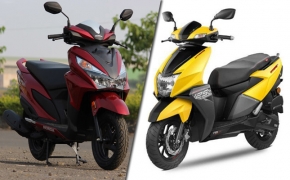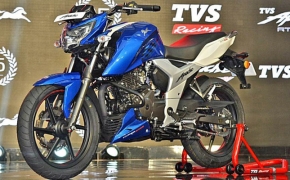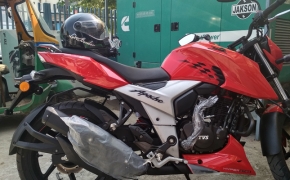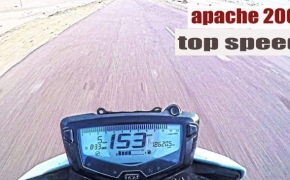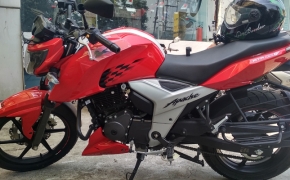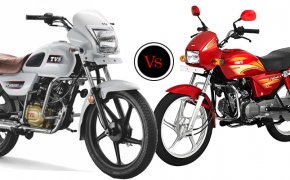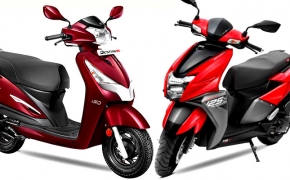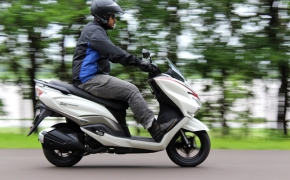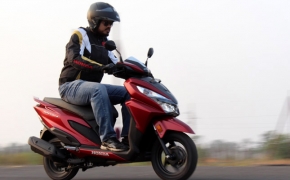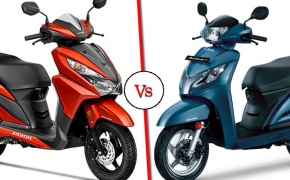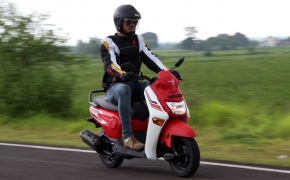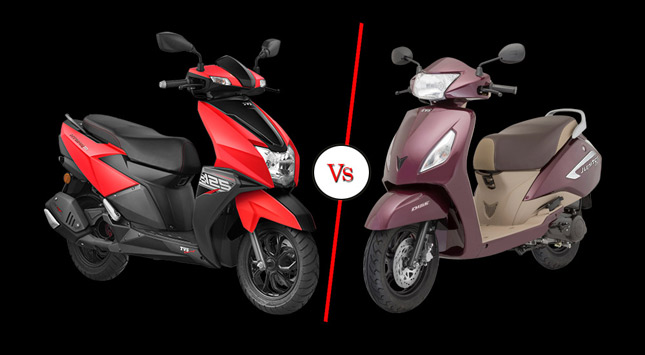 TVS is the motorcycle company which has made India proud on many fronts. They participate in rally races, track races and even dangerous endurance events like the Dakar. Over the years they have built quite a good resume' and are continuing down the same path by continuously innovating and bringing prototypes like the TVS Zeppelin and Apache Ethanol.
TVS is the motorcycle company which has made India proud on many fronts. They participate in rally races, track races and even dangerous endurance events like the Dakar. Over the years they have built quite a good resume' and are continuing down the same path by continuously innovating and bringing prototypes like the TVS Zeppelin and Apache Ethanol. However, today we are not here to talk about the motorcycles but instead, we are going to focus on the scooters. It is often the case that the "scooter-crowd" gets ignored by the media because they are not as fast and fun to ride as the motorcycles. That's why today we are going to compare 2 capable TVS scooters, The Ntorq and The Jupiter ZX-Disc, in order to determine which one is best for you.
Engine:
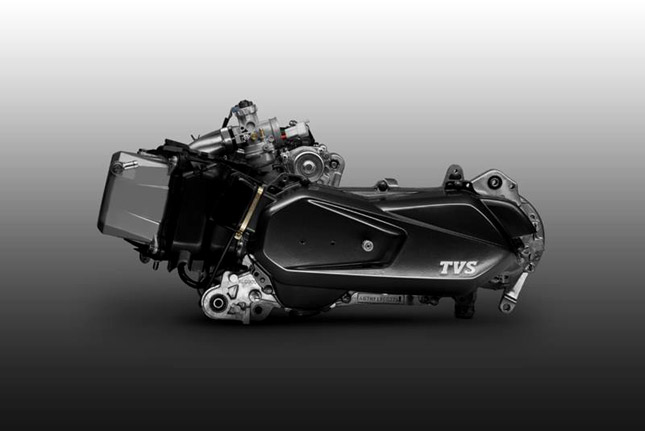 The Tvs Ntorq features an unconventional 3 Valve intake system, with 2-intake valves and a single exhaust valve. Now in any engine without a turbo the intake air is fed into the cylinder by atmospheric pressure, so having another hole for the engine to receive combustible air, improves its performance. It is also required because Ntorq has a bigger 125 cc engine and it’d need more amount of air to deliver proper fuel efficiency.
The Tvs Ntorq features an unconventional 3 Valve intake system, with 2-intake valves and a single exhaust valve. Now in any engine without a turbo the intake air is fed into the cylinder by atmospheric pressure, so having another hole for the engine to receive combustible air, improves its performance. It is also required because Ntorq has a bigger 125 cc engine and it’d need more amount of air to deliver proper fuel efficiency.TVS Jupiter on the other hand features a simple 2-Valve 110 cc. It is enough for the scooter because the size of the cylinder is less than the Ntorq. Both Scooters feature a CVT Automatic transmission and Overhead Cam layout in which a single camshaft controls the intake and exhaust valves.
Power and Torque:
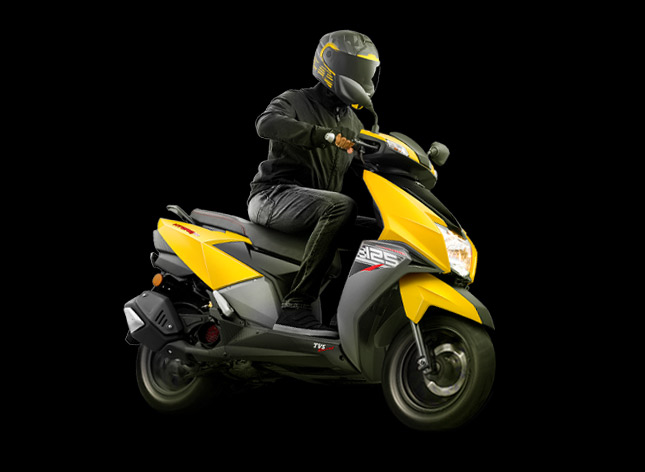 The Ntorq makes an impressive 10.5 NM of torque @5500 RPM and 9.4 PS of power @7500 RPM. Just like every other TVS engine, the torque on Ntorq too hits very early, making it easy to ride in bumper to bumper traffic.
The Ntorq makes an impressive 10.5 NM of torque @5500 RPM and 9.4 PS of power @7500 RPM. Just like every other TVS engine, the torque on Ntorq too hits very early, making it easy to ride in bumper to bumper traffic. TVS Jupiter makes around 7.88 BHP of power @7500 RPM and 8 NM of torque @ 5500 RPM. The torque difference between both of the scooters is noticeable immediately while the power difference is apparent in the middle range.
Chassis, Design and Suspension:
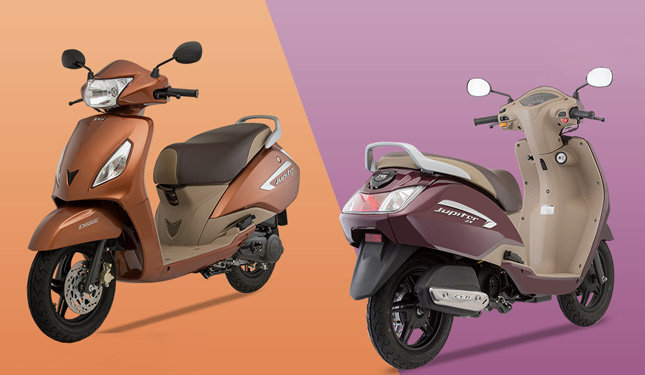 The Ntorq has a seat height of 770 mm and a ground clearance of 155 mm. The weight of the scooter is 116 kg and its wheelbase is 1285 mm. The scooter also features telescopic forks with a 220 mm disc brake up front and a gas-filled hydraulic shock absorber with 130 mm drum brake at the rear. The scooter’s frame is a high rigidity underbone type and the fuel tank is of 5 liters capacity.
The Ntorq has a seat height of 770 mm and a ground clearance of 155 mm. The weight of the scooter is 116 kg and its wheelbase is 1285 mm. The scooter also features telescopic forks with a 220 mm disc brake up front and a gas-filled hydraulic shock absorber with 130 mm drum brake at the rear. The scooter’s frame is a high rigidity underbone type and the fuel tank is of 5 liters capacity.TVS Jupiter has a seat height of 765 mm and a ground clearance of 150 mm. Its weight is relatively less at 108 kg and so is its wheelbase of 1275 mm. Jupiter also features telescopic suspension paired with a 220 mm disc and a gas charged mono shock along with a 130 mm drum brake, at the front and the rear respectively. It also the high rigidity underbone type chassis and features a similar 5-litre fuel tank.
Electrical:
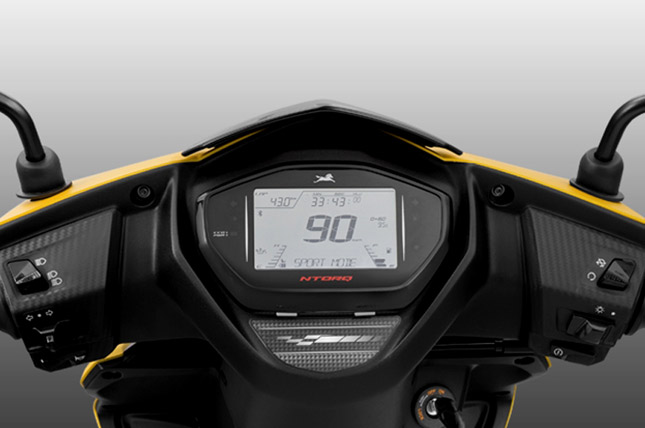 TVS Ntorq has an interactive user interface which features TVS’ Smartxonnect technology that allows the rider to pair up their phone with the scooter’s computer and customize various features on it. The process gives access to the user of location tracking, navigation, hud customisability and of various information related to scooters performance. The user can also insert their preferred name which the scooter would greet them with when they switch on the ignition. The whole instrument cluster is digital and very interactive to play with.
TVS Ntorq has an interactive user interface which features TVS’ Smartxonnect technology that allows the rider to pair up their phone with the scooter’s computer and customize various features on it. The process gives access to the user of location tracking, navigation, hud customisability and of various information related to scooters performance. The user can also insert their preferred name which the scooter would greet them with when they switch on the ignition. The whole instrument cluster is digital and very interactive to play with. TVS Jupiter features a purely analogue console which displays conventional information like speed, fuel and distance traveled.
Verdict:
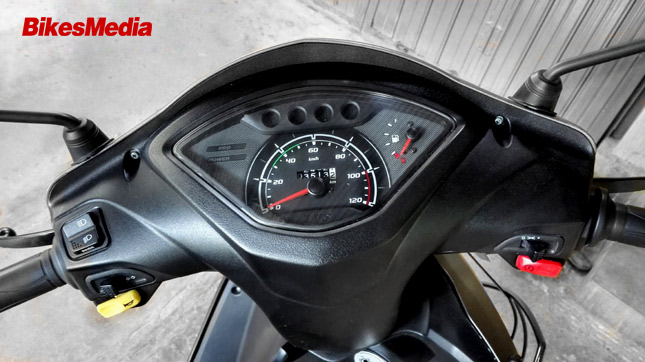 TVS Ntorq is a great scooter in terms of overall performance and features but TVS Jupiter isn’t far behind either. Ntorq's abilities also restrict it, in terms of the audience which would actually use them. Scooter crowd doesn’t actually use such high tech features while riding, because most of their commutes take places within the city where the streets are known and navigation isn’t an issue.
TVS Ntorq is a great scooter in terms of overall performance and features but TVS Jupiter isn’t far behind either. Ntorq's abilities also restrict it, in terms of the audience which would actually use them. Scooter crowd doesn’t actually use such high tech features while riding, because most of their commutes take places within the city where the streets are known and navigation isn’t an issue.
In terms of a performance, Ntorq is the better choice between the two. Still, the thing is many people buy a scooter for a comfort and ease of usage, the added performance is appreciated but not compulsory. TVS Jupiter as it is represents a perfectly fine everyday machine, it already has telescopic forks and a disc brake for comfort. The extra Rs 4000 are justified if you plan to use all the navigation and features of the Ntorq on a regular basis. That’s why TVS Ntorq is the winner of the two but in accordance with the objective of having a scooter, TVS Jupiter still remains a sensible choice.
By: Yetnesh Dubey












